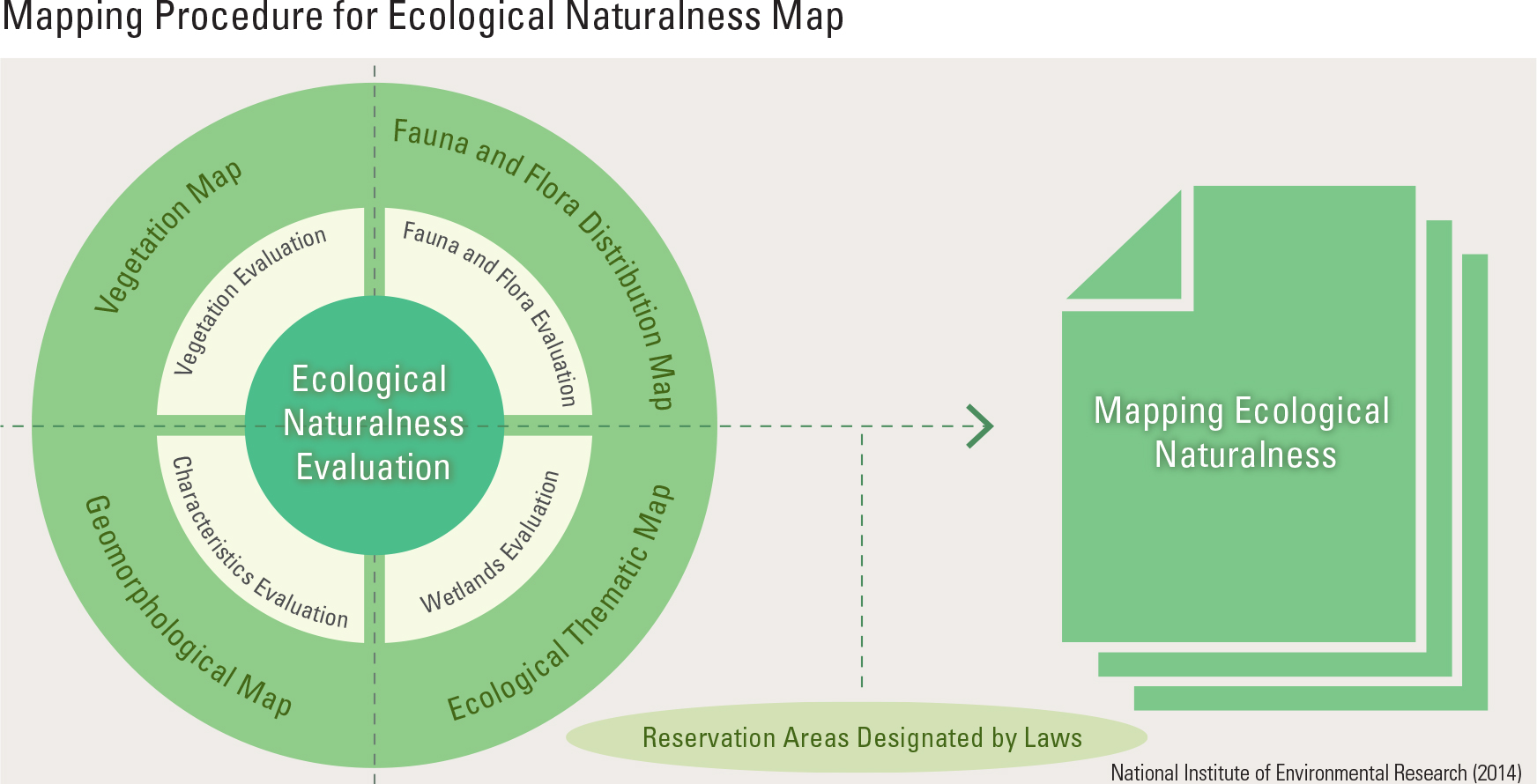English II
Korea is located between 33 ̊ and 43 ̊ north latitude in a temperate climate region with four seasons. Precipitation in Korea is abundant, and each season shows diverse climate characteristics. Mountain areas, which are mostly distributed around the northern and eastern regions, cover about 64% in the land of South Korea in 2015. In the southern and western areas, large rivers run, and various erosional or depositional landforms surround the rivers. Three sides of the Peninsula are surrounded by the sea with a rias coast and many islands in the South Sea; even and at tide- land resulting from a vast tide range in the Yellow Sea; and sand dunes and lagoons alongside a smooth coastline in the East sea. The complexity and variety of ecosystems formed by the diverse climate and complicated topography affect the biodiversity inhabiting the Peninsula. Sub-alpine coniferous forests are com- mon in the northern region, deciduous broadleaf forests are common in the central region, and warm, temperate evergreen forests are common in the southern and island regions. The natural conditions and variety of vegetation also derive variations in ecosystem productivity, resulting in distinct micro-habitats for a wide diversity of fau- nal communities. The rich and diverse ecosystems in the Korean Peninsula have attracted people for centuries. People of Korea have been provided with abun- dant ecosystem services. They have developed a unique lifestyle that merges the marine culture of the Paci c with the continental culture of Eurasia. They have also established a watershed-based traditional view of nature with the Baekdudaegan mountain ridge as the backbone of the Peninsula, and have developed numerous unique ecological cultures such as village forest, acorn jello, Song- gye (traditional social institution for sustainable forest management), and Hyangyak (local rules). Although the rapid industrialization and land development has expanded the national econo- my, Korea now faces significant environmental issues such as pollution of air, water, and soil, reduction of biodiversity, and ecosystem degrada- tion. To take action against these issues, natural environments and biota have been investigated nationwide. The collected data have been compre- hensively assessed and used for the formation of Ecological Naturalness Maps. Ecological Natural- ness Maps visualize the ecological value of each spatial unit—mountains, rivers, inland wetlands, lakes, farmland, and urban areas—according to a rating system. For the Ecological Naturalness Maps, environ- mental investigations are carried out to evaluate ecological naturalness through field surveys under 9 categories (geographical features, vege- tation, ora, benthic macro-invertebrates, insects, freshwater fish, reptiles, birds, and mammals). The results are stored as GIS database. Based on this data, assessments of vegetation, animals and plants, geographical features, and wetlands are carried out for the comprehensive evaluation of the Ecological Naturalness Maps. Final results are illustrated on the maps ac- cording to a 4-grade ranking system. In Grade 1 areas, the highest grade, development activities are limited in order to preserve or restore the natural environment. In Grade 2 areas, measures are required to minimize impacts on the natural environment due to development and land use. In Grade 3 areas, systematic development and land use are permitted. Reservation areas such as national parks and cultural heritage protection sites designated as reservation areas by laws such as the Natural Environment Conservation Act are classi ed as special management areas. Ecological Naturalness Maps are used in na- tional and local environmental plans, as well as in the process of making and implementing devel- opment plans, environmental impact assessments, and in consultations requiring referential data.
page_2 |
